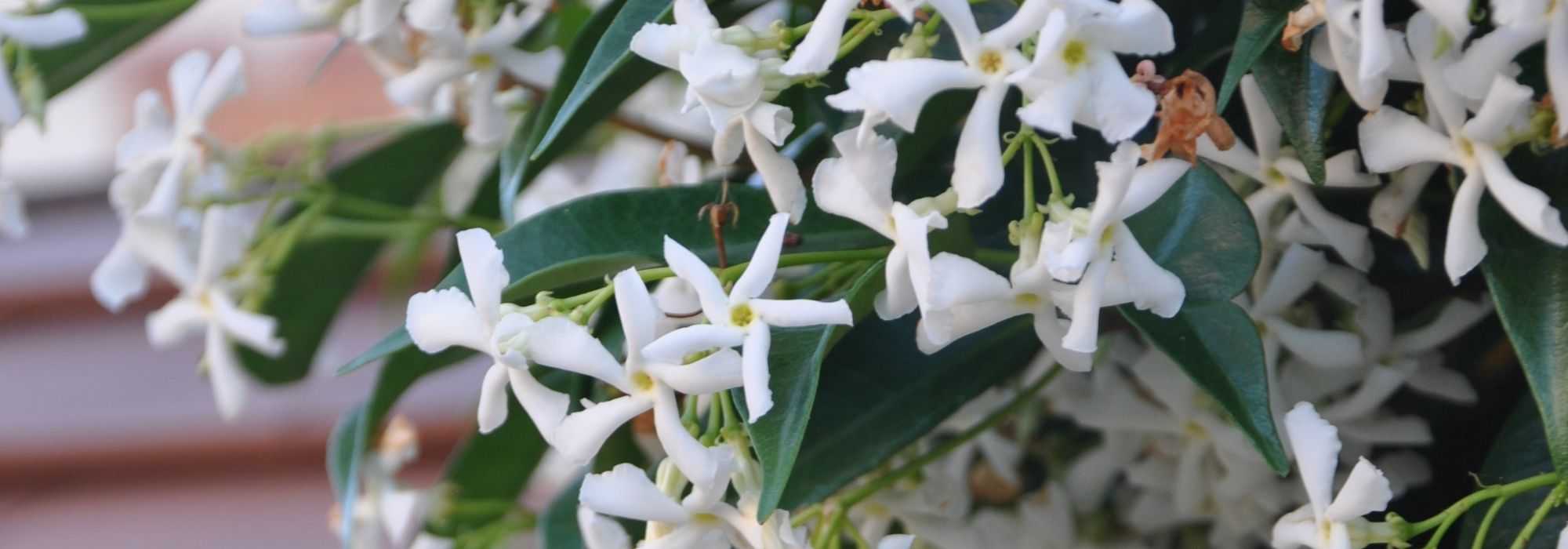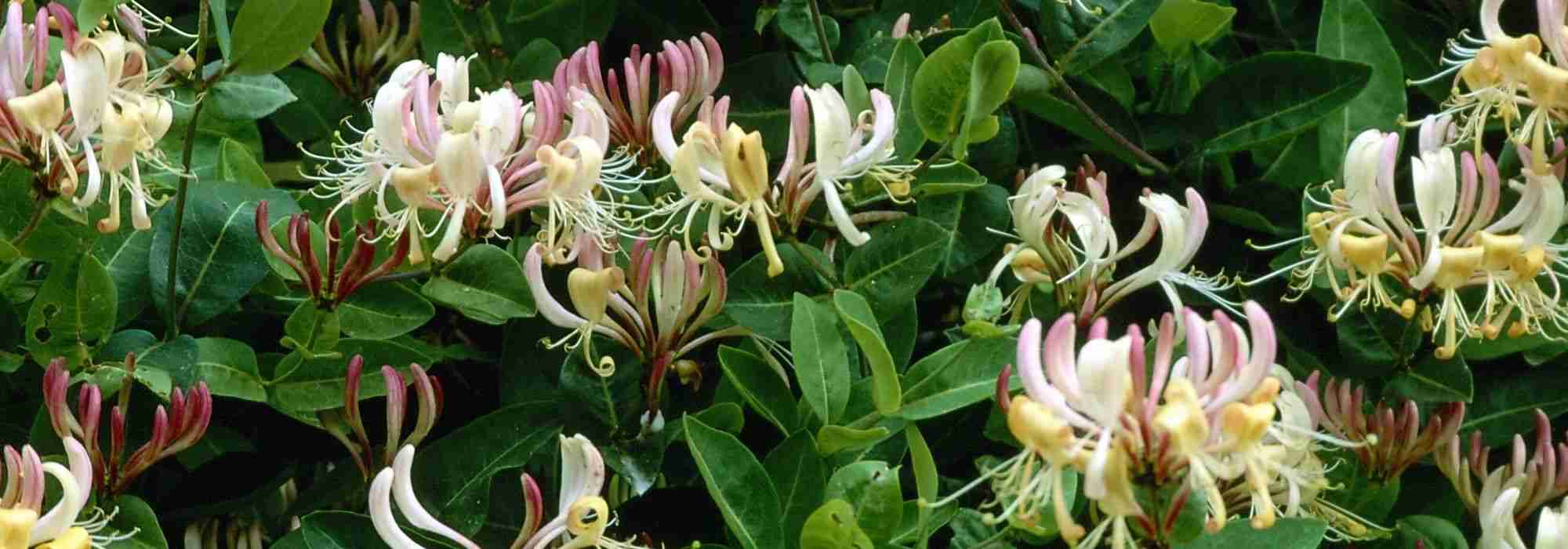

Tropaeolum tuberosum Ken Aslet
Tropaeolum tuberosum Ken Aslet
Tropaeolum tuberosum var. lineamaculatum Ken Aslet
Garden Nasturtium
A disgrace. Site to avoid! I ordered 3 tubers at €6.50 each and out of the three, two look like tiny pieces of completely dried roots and the third, which is the only one that might potentially produce something, measures half a centimetre in diameter. I had already bought some from another reputable site and they were cheaper and several centimetres in diameter, delivered in potting soil, but I specifically wanted the ken aselet for their early flowering. It's a shame that photos cannot be posted in the reviews.
Julien, 05/03/2020
Special offer!
Receive a €20 voucher for any order over €90 (excluding delivery costs, credit notes, and plastic-free options)!
1- Add your favorite plants to your cart.
2- Once you have reached €90, confirm your order (you can even choose the delivery date!).
3- As soon as your order is shipped, you will receive an email containing your voucher code, valid for 3 months (90 days).
Your voucher is unique and can only be used once, for any order with a minimum value of €20, excluding delivery costs.
Can be combined with other current offers, non-divisible and non-refundable.
Why not try an alternative variety in stock?
View all →This plant carries a 6 months recovery warranty
More information
We guarantee the quality of our plants for a full growing cycle, and will replace at our expense any plant that fails to recover under normal climatic and planting conditions.
Would this plant suit my garden?
Set up your Plantfit profile →
Description
Tropaeolum tuberosum Ken Aslet is a variety of tuberous nasturtium that is more vigorous than the type species, with a delightful flowering period from July to September. Its flowers are like delicate yellow-orange bells that appear to be hanging from foliage garlands of a slightly bluish-grey green. These stems are capable of quickly and gracefully winding around their support, transforming even the most modest trellis into a flowering mantle. This charming climbing plant is able to grow in poor soils but its fleshy root, much appreciated in cooking, dislikes the cold dampness of northern hemisphere winters. For all these reasons, it is a great addition to both ornamental gardens and vegetable patches, requiring care similar to that of a Dahlia.
Tropaeolum tuberosum, like all nasturtiums, belongs to the Tropaeolaceae family. This vigorous plant, perennial by its tuber, is native to the Andes, where it can grow at high altitudes, even in poor soils among weeds. This entirely edible botanical species still constitutes one of the main food resources for some Andean populations, who cultivate it on the Peruvian and Bolivian high plateaus. Like potatoes, it forms tubers that multiply rapidly and are arranged in a string. These fleshy roots, shaped like elongated pears, measuring 5 to 15 cm (2 to 6in) in length, pearly and of a light yellow colour streaked with purple, produce woody climbing stems that can reach up to 2.5 metres (8 feet) under good conditions. They are adorned with typical nasturtium foliage: carried on a red central petiole, rounded and divided into 5 lobes, the leaves are a bluish-greyish green, fairly light, with fine lighter veins. Flowering begins in July and usually ends in September-October. The tubular flowers, 4 to 6 cm (2in) long, surrounded by a red-orange calyx with a spur, open into very bright yellow corollas. They are suspended from long red peduncles in the axils of the leaves, all along the stems.
The tuberous nasturtium Ken Aslet is not a very hardy plant, especially if the soil is moist in winter, so it should be dug up and stored at the first frost, like a Dahlia. In the garden, allow it to take over a trellis, which it will cover in just one season. Alternatively, let it cover the ground if you have enough space: the result will be astonishing and charming at the same time. With its moderate growth, occupying about 2 metres (7 feet) in all directions, it is perfect for adorning a trellis in an original way. It can be paired with a Sollya heterophylla, with its azure blue bells, or with sweet peas or morning glories. By planting the wild tuberous nasturtium (Tropaeolum tuberosum) alongside it, which flowers later, you can enjoy uninterrupted flowering until the first frost in mild climates. You can also grow it in a pot, from which it will elegantly cascade its leaves and flowers.
In the vegetable garden, space the plants about 1 metre (3 feet) apart in all directions and install a support for the stems to climb on. In this nasturtium, everything is edible: its young leaves and flowers can be consumed raw in salads (or the leaves cooked as a green vegetable). The tubers, when raw, have a pungent flavour that pairs well with other raw vegetables (cabbage, beetroot, celery, cucumbers), which can be accompanied by some walnut kernels and cubes of cheese (feta, goat, comté). This pungent aspect disappears when cooked, giving way to a very mild, round, aromatic flavour that evokes violets, pepper or licorice, depending on one's palate. These roots can be prepared like potatoes: boiled or steamed with their skin, served with butter or cream, parsley or in a vinaigrette sauce, or thinly sliced and sautéed in a pan, for example. In Bolivia, they are prepared as a compote and sweetened with molasses.
Tropaeolum tuberosum Ken Aslet in pictures


Plant habit
Flowering
Foliage
Botanical data
Tropaeolum
tuberosum var. lineamaculatum
Ken Aslet
Tropaeolaceae
Garden Nasturtium
Andes Mountains
Planting and care
Plant your tubers as soon as the frost is no longer a concern at a depth of 10 cm (4in), in a pot or in open ground in a sunny or clear location and in fresh, light, loose, well-drained soil, even rather poor. Work the soil to a depth and width of 15 cm (6in) to facilitate rooting. Vegetation starts in summer, but can be forced in a pot in a well-lit and slightly heated room. Watering is necessary for establishment but should subsequently be spaced out. Remove your tubers at the first frost, as they do not tolerate temperatures below -5°C (23°F), especially in wet soil. Good winter protection, in the form of a thick mulch covered with a winter veil, can help tubers survive not too cold winters without damage. Do not be surprised when digging them up if you discover a large mass of tubers, as they thrive somewhat like a potato plant. Harvesting will take place at the end of the season. It can be increased by earthing up the stems.
Gourmet friends: do not hesitate to consume the excess tubers cooked in salted water or fried, an amazing flavour to discover! Any you wish to replant the following year should be stored frost-free in slightly moist soil or compost to prevent dehydration. Tuberous nasturtiums, unlike their seed cousins, are not susceptible to aphids.
Planting period
Intended location
Care
Planting & care advice
-
, onOrder confirmed
Reply from on Promesse de fleurs
Similar products
Haven't found what you were looking for?
Hardiness is the lowest winter temperature a plant can endure without suffering serious damage or even dying. However, hardiness is affected by location (a sheltered area, such as a patio), protection (winter cover) and soil type (hardiness is improved by well-drained soil).

Photo Sharing Terms & Conditions
In order to encourage gardeners to interact and share their experiences, Promesse de fleurs offers various media enabling content to be uploaded onto its Site - in particular via the ‘Photo sharing’ module.
The User agrees to refrain from:
- Posting any content that is illegal, prejudicial, insulting, racist, inciteful to hatred, revisionist, contrary to public decency, that infringes on privacy or on the privacy rights of third parties, in particular the publicity rights of persons and goods, intellectual property rights, or the right to privacy.
- Submitting content on behalf of a third party;
- Impersonate the identity of a third party and/or publish any personal information about a third party;
In general, the User undertakes to refrain from any unethical behaviour.
All Content (in particular text, comments, files, images, photos, videos, creative works, etc.), which may be subject to property or intellectual property rights, image or other private rights, shall remain the property of the User, subject to the limited rights granted by the terms of the licence granted by Promesse de fleurs as stated below. Users are at liberty to publish or not to publish such Content on the Site, notably via the ‘Photo Sharing’ facility, and accept that this Content shall be made public and freely accessible, notably on the Internet.
Users further acknowledge, undertake to have ,and guarantee that they hold all necessary rights and permissions to publish such material on the Site, in particular with regard to the legislation in force pertaining to any privacy, property, intellectual property, image, or contractual rights, or rights of any other nature. By publishing such Content on the Site, Users acknowledge accepting full liability as publishers of the Content within the meaning of the law, and grant Promesse de fleurs, free of charge, an inclusive, worldwide licence for the said Content for the entire duration of its publication, including all reproduction, representation, up/downloading, displaying, performing, transmission, and storage rights.
Users also grant permission for their name to be linked to the Content and accept that this link may not always be made available.
By engaging in posting material, Users consent to their Content becoming automatically accessible on the Internet, in particular on other sites and/or blogs and/or web pages of the Promesse de fleurs site, including in particular social pages and the Promesse de fleurs catalogue.
Users may secure the removal of entrusted content free of charge by issuing a simple request via our contact form.
The flowering period indicated on our website applies to countries and regions located in USDA zone 8 (France, the United Kingdom, Ireland, the Netherlands, etc.)
It will vary according to where you live:
- In zones 9 to 10 (Italy, Spain, Greece, etc.), flowering will occur about 2 to 4 weeks earlier.
- In zones 6 to 7 (Germany, Poland, Slovenia, and lower mountainous regions), flowering will be delayed by 2 to 3 weeks.
- In zone 5 (Central Europe, Scandinavia), blooming will be delayed by 3 to 5 weeks.
In temperate climates, pruning of spring-flowering shrubs (forsythia, spireas, etc.) should be done just after flowering.
Pruning of summer-flowering shrubs (Indian Lilac, Perovskia, etc.) can be done in winter or spring.
In cold regions as well as with frost-sensitive plants, avoid pruning too early when severe frosts may still occur.
The planting period indicated on our website applies to countries and regions located in USDA zone 8 (France, United Kingdom, Ireland, Netherlands).
It will vary according to where you live:
- In Mediterranean zones (Marseille, Madrid, Milan, etc.), autumn and winter are the best planting periods.
- In continental zones (Strasbourg, Munich, Vienna, etc.), delay planting by 2 to 3 weeks in spring and bring it forward by 2 to 4 weeks in autumn.
- In mountainous regions (the Alps, Pyrenees, Carpathians, etc.), it is best to plant in late spring (May-June) or late summer (August-September).
The harvesting period indicated on our website applies to countries and regions in USDA zone 8 (France, England, Ireland, the Netherlands).
In colder areas (Scandinavia, Poland, Austria...) fruit and vegetable harvests are likely to be delayed by 3-4 weeks.
In warmer areas (Italy, Spain, Greece, etc.), harvesting will probably take place earlier, depending on weather conditions.
The sowing periods indicated on our website apply to countries and regions within USDA Zone 8 (France, UK, Ireland, Netherlands).
In colder areas (Scandinavia, Poland, Austria...), delay any outdoor sowing by 3-4 weeks, or sow under glass.
In warmer climes (Italy, Spain, Greece, etc.), bring outdoor sowing forward by a few weeks.


















































